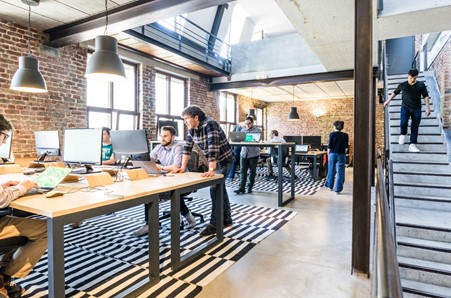Workplace culture is a known driver of employee experience. After all, a place that promotes employee happiness through an excellent work culture is bound to have a great employee experience. But is the inverse true? Can employees with a good workplace experience facilitate a positive company culture?
When it comes to it, a company’s culture is the personality of a company. It is the summation of the formal and informal processes across the organization. Like people, company cultures could be open, friendly to formal, and closed. For instance, an organization with a formal culture would maintain a seamless workplace experience, communicate only when necessary, distribute tasks in advance, incorporate corporate messaging in emails, and so on.
This is why company culture may initially seem disconnected from the workplace experience. After all, the latter combines employee experience with physical and digital office space to deliver a nurturing work environment to employees.
But work culture and workplace experience intersect in one place – the employees. Naturally, they impact one another as well.
Read on to find out how components of the workplace experience, namely employee experience, office space, and technology, impact employee culture.
How the Different Aspects of Workplace Experience Impact Company Culture
Employee Experience and Company Culture
As you know, employee experience is your workers’ perception formed from their interactions with supervisors, colleagues, customers, and physical space, from their initial job interview until their exit.
Consider this example. You onboard a new employee, and they cannot find a meeting room. They immediately message their colleague from the peer group, arrive for the meeting on time, and have a positive experience at work.
Since the workplace had an open and friendly work culture, the newly onboarded employee received immediate help from their colleagues. This, in turn, pushed the joinee to help their peers when required and bolstered the company’s overall friendly work culture.
Simply put, if you want a positive company culture, start by improving the employee experience. It adds to the overall workplace experience and encourages employees to look forward to their days at work and perform at their best. Implement pro-employee policies, make communication accessible, reward performance, and good company culture will prevail on its own.
Office Space and Company Culture
Office space plays a crucial role in improving workplace experience. The physical environment is not just a design or work of architecture; it guides how employees perform their tasks. How your workforce interacts with facilities and their workspaces also influences company culture.
For example, a crowded floor with desks placed haphazardly makes navigation frustrating and reduces the number of interactions at work. Frustrated employees are snappier and are not as likely to respond to their colleagues. Such small interactions can add up and create a company culture of unresponsiveness over time.
On the other hand, an open floor plan with a well-lit interior, bright paints, and ventilation can make the workplace more inviting. Well-arranged desks and a hot-desking system can spark more formal and informal conversations and make for an engaging work experience.
When employees feel comfortable being at the office, it not only helps them perform at their best. They look forward to being at work, engaging with their colleagues, and creating a nurturing company culture.
Technology and Company Culture
Technology is at the core of workplace experience management. Workplaces need technology to accomplish day-to-day tasks like project scheduling, collaboration, and communication. Without the right set of tools, you risk hindering the workplace experience.
Lack of the right tools causes miscommunications and delays and affects workplace productivity. It can trap you in the vicious cycle of missed deadlines, figure-pointing, and chaos at the workplace. And as a result, company culture takes a hit.
Hence, technological solutions to common workplace problems become more critical in hybrid workplaces where managers must manage on-site and remote workers. After all, when workers cannot get proper access to desks, rooms, and other amenities, which impacts their workplace experience. But that is not all.
Messaging and email apps, cloud-based file sharing, and desk/room booking automation are some solutions that can help you enhance your workplace experience too. With updated technology, you can ensure that your workforce is well-engaged at work. You can ensure that teams can collaborate without constraints of time and place.
Final Words
Workplace experience can make or break company culture. But with a special focus on employee experience, office space, and workplace technology, you can create a positive and nurturing work environment. It will help you create an agile and engaged workforce that fosters a positive company culture.
How you design your physical workplace will determine whether or not your employees will have a great workplace experience. If you are willing to take a holistic approach to creating a positive workplace, then you need the right tools.
WorkInSync workplace experience software helps you automate every vital aspect of your workplace management. To know more about the product, schedule a demo today.

